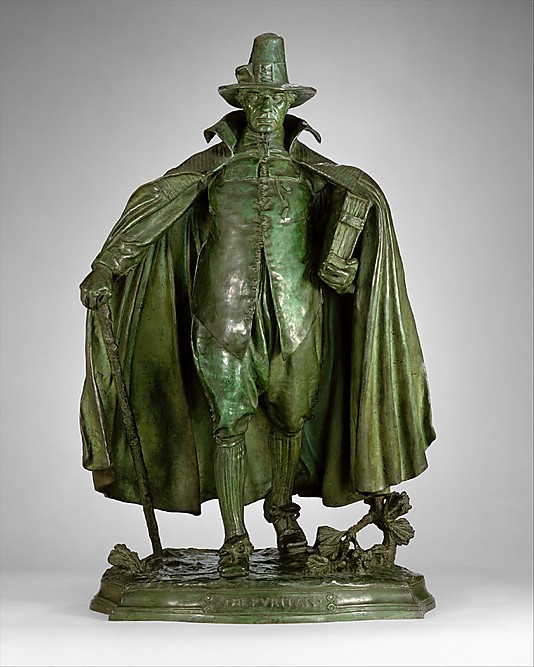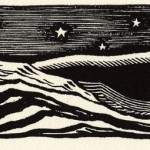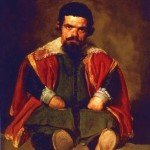Justified by Use
Lutheran theologian Oswald Bayer reminds us that in An Essay on Human Understanding, John Locke argues that “person” is a “forensic term.” The need to justify one’s existence to one’s self and to others, to gain and maintain recognition, is the foundation of the human condition under the sun. In this transactional, leveraged, economy, we are what we do, we give in order to receive, and we use others as means to our ends, enlisting them, often un-knowingly, in our life projects, our desperate need for justification. For Martin Luther, justification is more than a doctrine of salvation, it is an ontological reality. In fact, for Luther, the definition of the human person comes directly from Romans: we are “justified by faith” (3: 23). Justification is ontological.
Kant was on to something when he attempted to define art as something that is not useful, not a part of this economy. This is an impossibility, given the forensic structure of reality, but Kant’s intuition was right. Art does something else, if only for a moment, and that moment needs to be preserved. (See my review essay, “Art In and Out of Context” at the Journal of Aesthetic Education, for an exploration of the practical importance of a Kantian formalism to preserve the integrity of artistic practice.) However, art historians and evangelical cultural critics have one thing in common when it comes to art: they agree that Kant’s notion of art-for-art’s sake is erroneous and naive: the value of art is its means for other social, political, or historical ends.
Taking seriously art’s uselessness is a way to preserve an aesthetic moment that defies the forensic structure of reality, a moment that testifies to an alien presence, grace. In “The Gospel: How is Art a Gift, a Calling, and an Obedience?,” Andy Crouch observes, “Art perhaps is one way of naming everything we as cultural beings do that cannot be explained in terms of its usefulness” (For the Beauty of the Church, ed. W.David O. Taylor). But Christians join the rest of culture in demanding that everything that is produced, including art, justify itself by its utility.
The Gambler
Art begins in the economy of leverage, justification. One of the most extreme examples is Dostoyevsky’s novella, The Gambler, 1866. Due to his gambling debts, Dostoyevsky entered into a risky contract with a publisher to deliver the manuscript in an impossibly short time frame. The Gambler was written in order to cancel debts. The origins and circumstances of this work of art could not have been more leveraged, self-interested, and forensically driven. And yet, what Dostoyesvsky succeeds in producing is a work that rises above its leveraged circumstances, to offer a profound insight into that part of human nature with which he was locked in combat.
Dostoyevsky’s example is hardly unique, although perhaps not as dramatic. Melville was adamant that writing for money was the only way to write anything of substance. Edvard Munch painted several copies of paintings that sold to collectors in order to sell them to other collectors. Yet despite those circumstances, the integrity of the work of art itself as something other than transactional currency was present. One of the primary roles of the art critic, Christian or otherwise, is to give voice to this moment, to preserve the integrity of art as somehow something else, operating in a different, alien economy.
Evangelicals and Evolutionists
I thought about this over the weekend while reading Adam Kirsch’s insightful review essay, “Art Over Biology” at The New Republic. Kirsch analyzes a recent trend in art analysis that attempts to defend (justify) art through biological evolution as important and useful, as an adaptation that preserves our survival. Kirsch muses at the desperate desire to make art useful. Kirsch cringes at the Darwinists’ insensitivity to art as a “useless” necessity, as something that does not help us reproduce or preserve the species. (For a different approach, see my “Darwin, Landscape Painting, and Jesus” at Books & Culture.)
It is indeed ironic that evangelical cultural critics and Darwinists agree that art must justify its existence by being useful, that its value must be demonstrated by how it can contribute to more important areas of human survival and flourishing. For the evolutionists, it is the preservation of the species through sexual reproduction, and for evangelicals it is politics, which, perhaps not coincidently, usually has to do with sexual reproduction (abortion, gay marriage, etc.).
“When I Hear the Word Culture, I Reach for My Gun”
Peter Blair, over at “On the Square” at First Things, wrote a revealing post a week or so ago entitled “Culture Before Politics.” Blair observes, quite rightly, that culture precedes politics. Yet for Blair, this means that Christians need to use culture as a weapon in politics.
Any success Christians have in the political marriage debate is more than countered by the cultural power of the understanding of marriage embodied in our popular art. Culture is prior to politics, and gay marriage has only become a political possibility because our culture has already accepted certain perspectives on human flourishing, marriage, and sex. And it is our art which has been a large contributing factor to ratifying and encouraging these perspectives.
Blair goes on to argue admirably that Christians need to produce good art, not “Christian art.” But the reason, he argues, is that good art is a better tool for shaping the culture than “Christian art,” which no one takes seriously. The assumption is that art exists to be “used” by political partisans to shape public opinion. A gay couple portrayed on a popular television show is obviously an attempt, so the perspective goes, for paving the way for gay marriage. And so for those who hold this position, we need Christians in the arts, in Hollywood, in order to get our views out there, in order to undo the progress in politics made by the secularists.
Museum Curator as Defender of Public Decency
I was a twenty-nine year old newly minted Ph.D. in modern and contemporary art and I had just been appointed to Chief Curator of a major midwestern university museum, which happened to be in my hometown. On one Sunday morning, the local paper had printed an announcement and my profile. One of the elders approached me at church later that morning and congratulated me on my hiring, and then said, “Now, you can get rid of all the nudes in the museum.”
Graceless
Evangelical participation in the arts and culture is, on the whole, graceless. It is characterized by an excruciatingly puritanical preoccupation with four-letter words and nudity, turning films, novels, and even paintings into means for political ends, presuming that the making of art is simply another form of politics. And so in their rush to use art and other cultural practices for political agendas, evangelical cultural critics and commentators simply fail to recognize the presence of grace in art.
Is it any wonder that artists, writers, and other creatives view Christianity to be a brittle and cranky religion that masks its insecurity with an oppressive legalism and a refusal to take pleasure in art for art’s sake?












